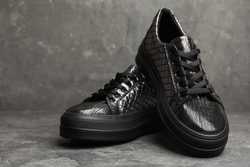- Fleece weight: 5.2 oz polyester (total jacket weight of 13.8 oz)
- Type: Full zip hoodie
- Fabric: 92% polyester (69% recycled), 8% spandex
- Fit: Slim
- Price on publish: $189
Best Fleece Jackets for Men for a Cozy but Stylish Winter 2024

Our evaluations and opinions are not influenced by our advertising relationships, but we may earn a commission from our partners’ links. This content is created by TIME Stamped, under TIME’s direction and produced in accordance with TIME’s editorial guidelines and overseen by TIME’s editorial staff. Learn more about it.
Winter is here, that frigid time of year when we gaze upon the humble sheep and mutter: That critter’s onto something. If you want your very own fleece wrapping, pull on your warmest sweatpants and hoodies, then take a look through our picks for the best fleece jackets for men.

If you need something warm and comfortable, but which still allows movement while keeping the weather out, this is the one for you. “This jacket takes the great qualities of a basic fleece and adds durability and weather resistant properties, with the help of some tech textile innovations,” says Charles Fratto, style director for ILOE Studios. Loiseau, too, is a fan, adding that, “Offering unrivaled breathability, wind resistance, and mobility capabilities, this jacket makes an excellent addition for outdoor activities.” Patagonia also made our list of the best men’s clothing brands for their quality and durability.
A versatile, warm, and easily-layered fleece that’s suitable for almost any activity.

We all know that winter coats can get expensive, and that goes for a lot of the fleece options out there, too. There are good options at lower prices if you know where to look, however. “A great tactical fleece option if you’re on a budget is this Crysully jacket,” says LaGrone. “It’s thick, soft, and has a hood and a variety of zipper pockets, making it ideal for an outdoorsman.”
A soft, warm, but rugged fleece hoodie, ideal for all kinds of outdoor adventures.

While fleece is warm, it’s not always ideal as a final, outer layer, especially if it’s wet outside. For something that’ll stand up to those cold, winter sprinkles, you may want to head to North Face. “Equipped with an innovative, water-repellent outer coating, this jacket provides extra protection from light precipitation while still offering superior warmth and insulation,” says Loiseau.
A fleece that won’t get soaked if the weather turns unexpectedly drizzly.

Sometimes, a thin fleece just isn’t going to cut it. When it’s time to break out the big guns, LaGrone recommends Columbia’s thick, 100% polyester sherpa fleece. “This heavyweight fleece is ideal for staying warm in the winter,” he says. “The sherpa material is extra fluffy and warm, but can still be used as a layering piece under a hardshell jacket in sub-zero temperatures.”
A thick, heavyweight fleece for really keeping out the winter chill.

Fleece is a miracle fabric when it comes to warmth, but for some, it can feel a little suffocating. For a more breathable option, Fratto suggests taking a look at this lightweight technical fleece from Patagonia. “If you’re on the move, you need a jacket that will breathe with you, not stifle you,” he says. “The R1 Air jacket was designed to do just that.”
A technical jacket designed to feel more lightweight and airy than traditional fleece.

For warmth without the bulk when hiking or climbing, Arc’teryx’s Delta jacket is the ideal candidate–stretchy and warm, but air permeable, so you don’t overheat while roaming around that mountain. “I love this one for its minimalist design and excellent warmth-to-weight ratio,” enthuses Loiseau. “This lightweight fleece jacket makes an excellent layer in various climates, in my opinion.”
A stretchy, breathable, lightweight fleece, ideal for vigorous outdoor activity.

Not everyone loves a full zip hoodie, so for those looking for a pullover option, Loiseau recommends this quarter-zip sweater from Patagonia. “This versatile pullover boasts stylish elegance, superior warmth, and ethical production, making it suitable for outdoor adventures while also being a great city jacket,” he says.
A thick, super-warm pullover fleece with a bunch of color options.

For true value for money, check out the Helly Hansen Daybreaker jacket, which perfectly splits the difference between affordability and quality. “This jacket has an affordable price while maintaining a streamlined and versatile style—it can go with just about anything,” says Fratto. With 12 different color options available—from deep red to bright yellow—he’s not wrong.
A soft, versatile fleece with an attractive price and a ton of colors to choose from.
My selections were made in consultation with three experts, who considered fit, style, warmth, construction, and value for money when making their recommendations. I also ensured that all of the fleece jackets for men on this list had overwhelmingly positive customer reviews.
“While it can be tempting to overstretch your budget when purchasing items of higher-end quality, finding an ideal fleece jacket that offers excellent value should always be your goal,” says Dimitry Loiseau, founder and chief editor of REGARD magazine. He adds that you just need to make sure the jacket will stand the test of time. “Carefully inspect all aspects of construction for quality assurance, such as reinforced seams and zippers that won't fray over time,” he suggests. “High-grade fleece should be soft to the touch with lasting insulation properties that retain their insulation.”
When it comes to winter jackets, it’s tough to find anything cozier than fleece. “Looking for fleece jackets constructed of recycled polyester or organic cotton fabric is going to be the best for quality, and best for the environment, in my opinion,” says Loiseau. He advises considering various fleece types (like microfleece, polar fleece, and grid fleece) when selecting a fleece material, and matching it to your intended use and climate needs. “Each of the varieties provides different levels of warmth, breathability, and weight, so select according to what will work for your purpose.”
To get the most warmth and comfort from your jacket while retaining breathability, Loiseau recommends looking for moisture-wicking linings that insulate without bulking it up too much.
“When selecting the ideal fleece jacket fit, personal preference and intended use play a vital role,” says Loiseau. “A slimmer style may offer more fashionable appeal, while looser fits may prove better suited to layering purposes, which will keep you warm outdoors.”
“A fleece jacket is commonly used as a layering piece, so it will not have a completely water-resistant outer shell,” warns Roger LaGrone, founder of Alexander Noel. “A hood, pockets, and zipper closure on a fleece will make it a more versatile jacket, but you can also find quarter zip and crew neck style fleece, depending on your style preference.”
If sustainability is a factor in your decision, LaGrone advises searching for fleece made from recycled materials. “Fleece material is most commonly made from a majority polyester material and sometimes blended with nylon or wool for moisture-wicking properties,” he says. “For a more sustainable option, you can look for recycled polyester material, which is just as durable.”
Whether you’re buying a fleece jacket for women or men, generally speaking, the two main categories under which everything else falls are natural and synthetic. “Natural fleece is made up of sheep’s wool, a sustainable and renewable fiber source that truly is a wonder,” says Fratto. “One of the main drawbacks is that wool in its natural state needs a bit of TLC when it comes to how you wash and launder it. Synthetic fleece, meanwhile, is a type of polyester that was developed to mimic all the great qualities of wool but allows you to wash and care for the garment a lot more easily.”
Once you delve deeper into these categories, you’ll find a whole bunch of different types of fleece, all with their own uses. “Types of fleece are generally organized by their material composition,” says LaGrone. “Fleece jackets will commonly be made from either 100% polyester, a polyester cotton blend, or a nylon-spandex and polyester blend.”
“Other garments will use microfleece, which is thin and soft, or sherpa fleece, which is heavily brushed, making it very plush and a good lining inside garments,” LaGrone continues. “Purely cotton blended fleece is usually used inside sweatshirts and sweatpants. Similarly, French terry fleece is an unbrushed material most commonly used for lightweight loungewear.”
As with most such questions, this will be somewhat subjective, as you attempt to find the right balance between your budget and your needs. “Generally speaking, the bigger the name of the brand and the more you veer into the performance wear lane, the higher the price point becomes,” says Fratto. “You want to be on the lookout for better quality fleece as you’re shopping—the better the quality, the less pilling and the longer the wear.”
“As with most garments made from a synthetic fiber, when you touch the fabric you can easily tell if it’s good quality or not,” says Fratto. “The more the fiber feels like plastic, the lower the quality. You want the fleece to feel soft, light, and warm.”
The answer to this really depends on what you intend to use it for. “If you plan on having the fleece as a standalone jacket for a cooler season, then having a looser fit might be your best bet,” says Fratto. “If you want the fleece to be a layering piece under heavier coats, then having a tighter (but not too tight) silhouette will reduce the bulk and be easier to wear.”
The information presented here is created by TIME Stamped and overseen by TIME editorial staff. To learn more, see our About Us page.



